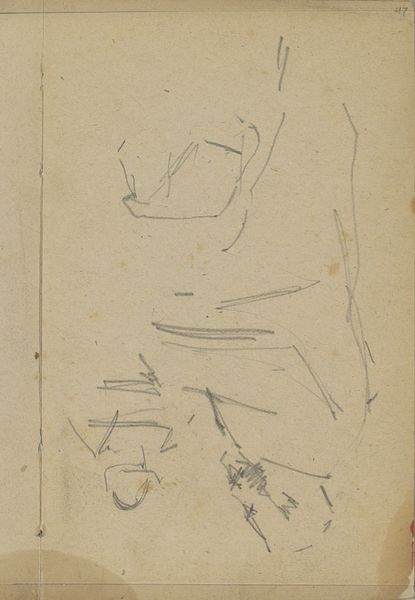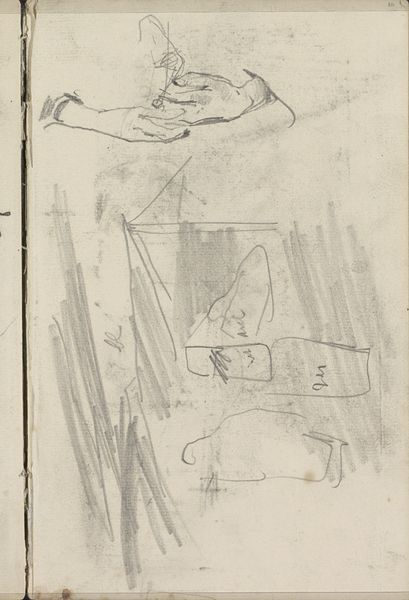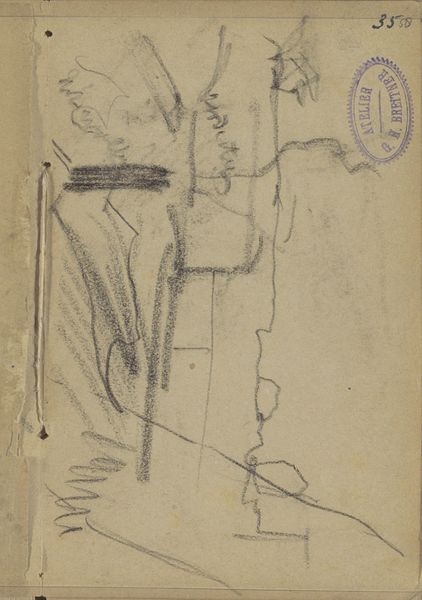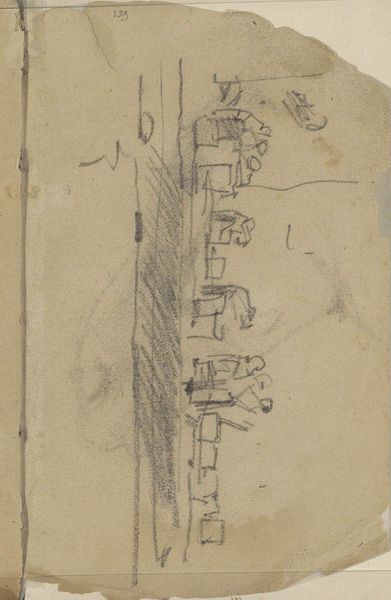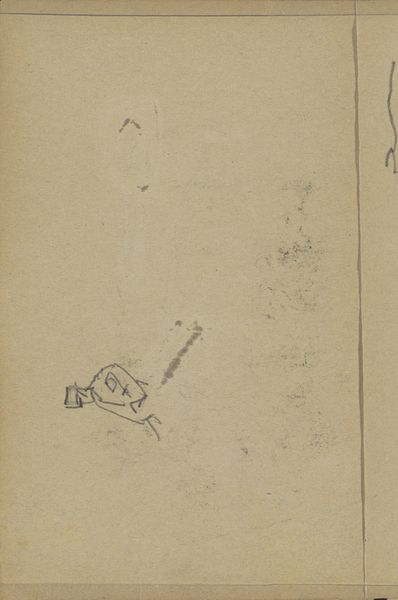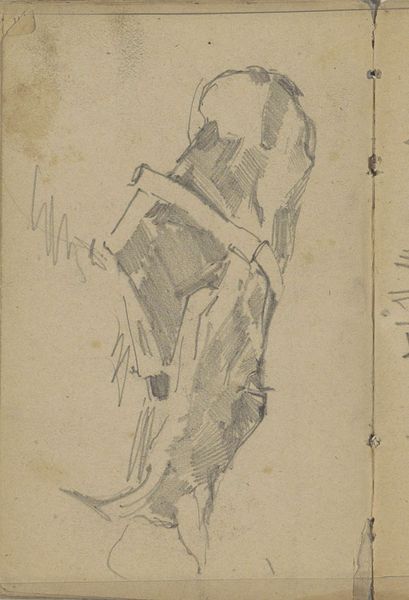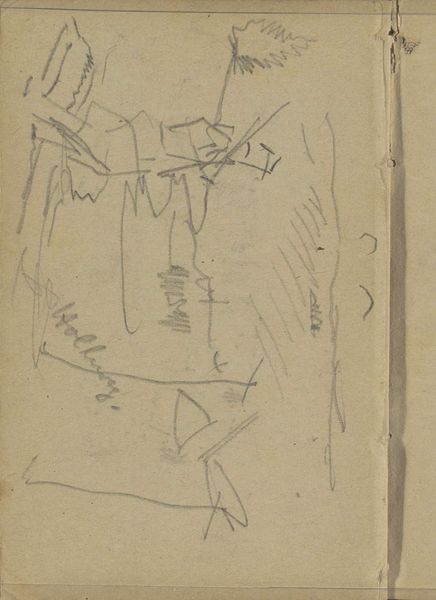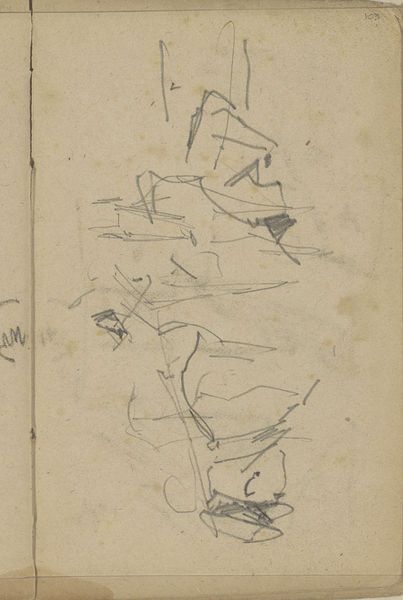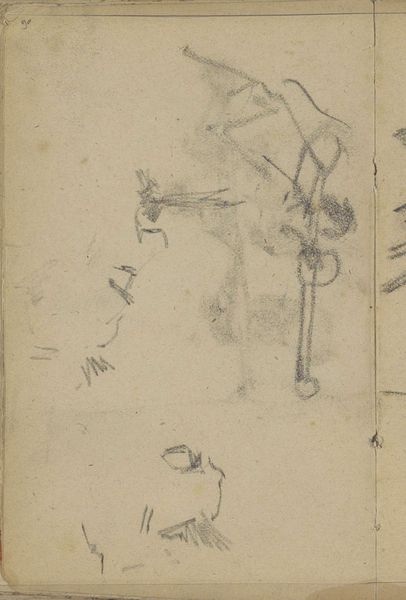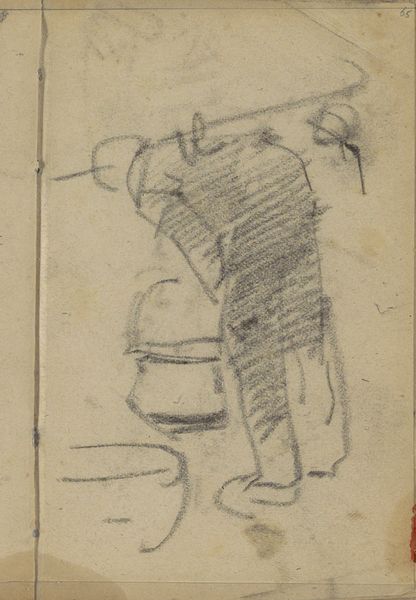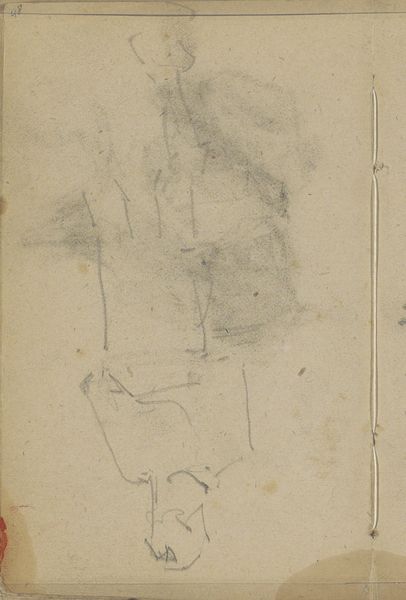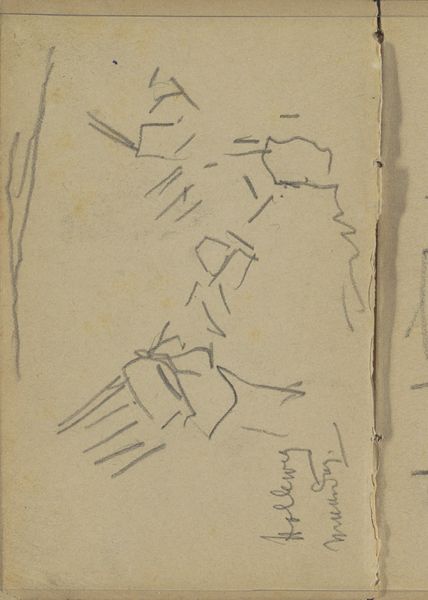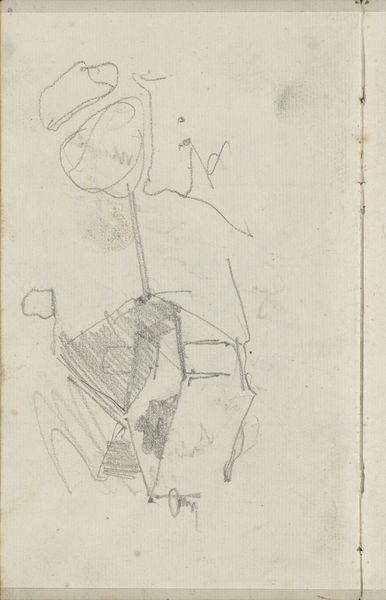
drawing, pencil
#
portrait
#
drawing
#
toned paper
#
light pencil work
#
impressionism
#
sketch book
#
landscape
#
figuration
#
personal sketchbook
#
idea generation sketch
#
sketchwork
#
detailed observational sketch
#
pencil
#
sketchbook drawing
#
storyboard and sketchbook work
#
sketchbook art
#
realism
Copyright: Rijks Museum: Open Domain
Curator: This sketch by George Hendrik Breitner, titled "Figuren aan het werk, mogelijk nettenboeters," translates to "Figures at work, possibly net menders," and dates back to around 1881-1883. It’s part of the Rijksmuseum's collection and provides a fascinating glimpse into the artist's process. Editor: My initial reaction is that there's an immediacy, a raw quality, in these rapidly sketched figures. The toned paper gives a warmth, despite the cool precision of the pencil lines. It feels like we're looking over Breitner's shoulder, capturing fleeting moments of labor. Curator: Exactly! It is likely from a sketchbook. Notice the careful observation of form and gesture. Breitner's drawings often explored urban life, but here, we see figures possibly engaged in more traditional work, perhaps in a fishing community. What might that mean? Editor: I think this points towards a very specific representation of labor, maybe a romanticizing one. The sketch offers, on one hand, a possible view into the lives of working-class individuals mending nets, yet this very portrayal exists only through the lens and hand of a bourgeois artist like Breitner, whose life differed immensely. This calls for questions about authenticity and the power dynamics inherent in image making. Curator: That is a valid point, the figures are presented almost reverentially, with simple directness. The sketch style avoids embellishment and sentimentality—Breitner captured just enough to convey the essence of these working people. How does the context of rapid industrialization play a part here? Editor: Absolutely. Industrialization transformed the Netherlands at the time, drawing many from these traditional sectors and communities towards the cities, for work in factories, that often paid much less. Breitner's capturing these "net menders," freezes a moment that industrial advancement threatened to make obsolete. He sketches them possibly unaware of how history will affect their lives. This imbues a quiet social critique: not as some glorious romantic painting, but as an attempt to capture the fleeting existence of this work culture. Curator: The contrast between the ephemeral nature of a sketch and the enduring presence of the work is compelling. Even unfinished, these figures have an undeniable weight and presence. I can see here how Breitner’s sketching is tied to observation and respect for humanity. Editor: And it reminds us of our responsibility to critically engage with such representations. It pushes to consider whose voices are amplified and whose are omitted in the story being sketched, demanding ongoing dialogues. Curator: This sketch becomes a reminder, perhaps a subtle memorial, etched on toned paper. Editor: Agreed. Art becomes an important artifact of remembering overlooked histories.
Comments
No comments
Be the first to comment and join the conversation on the ultimate creative platform.
